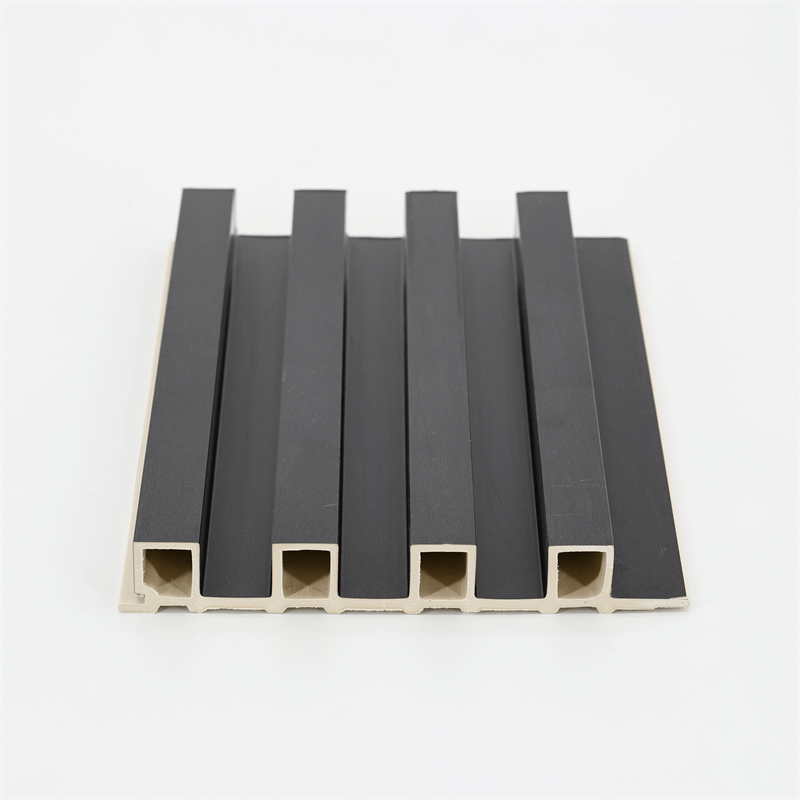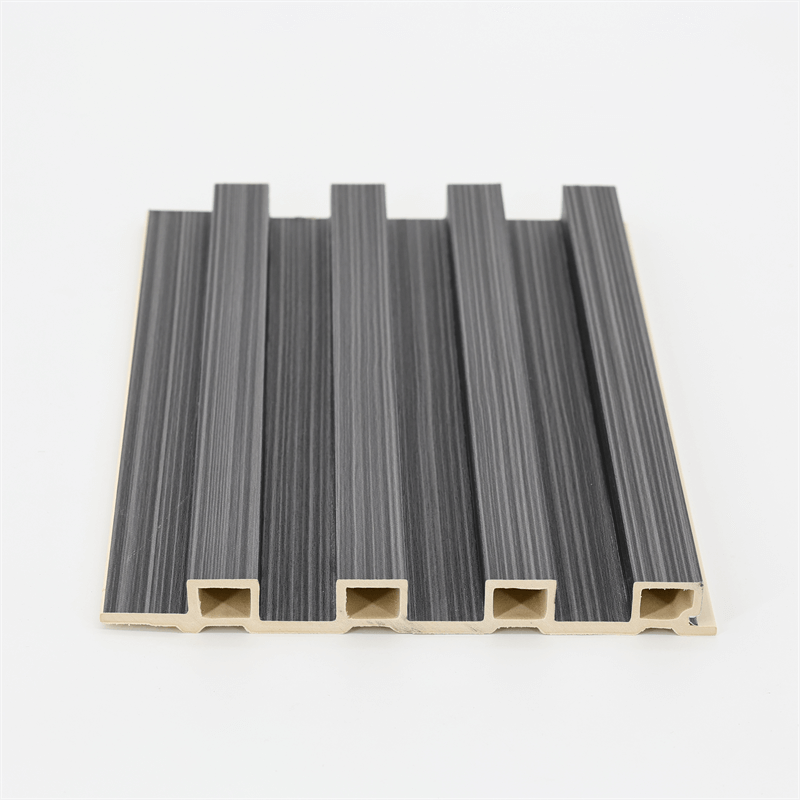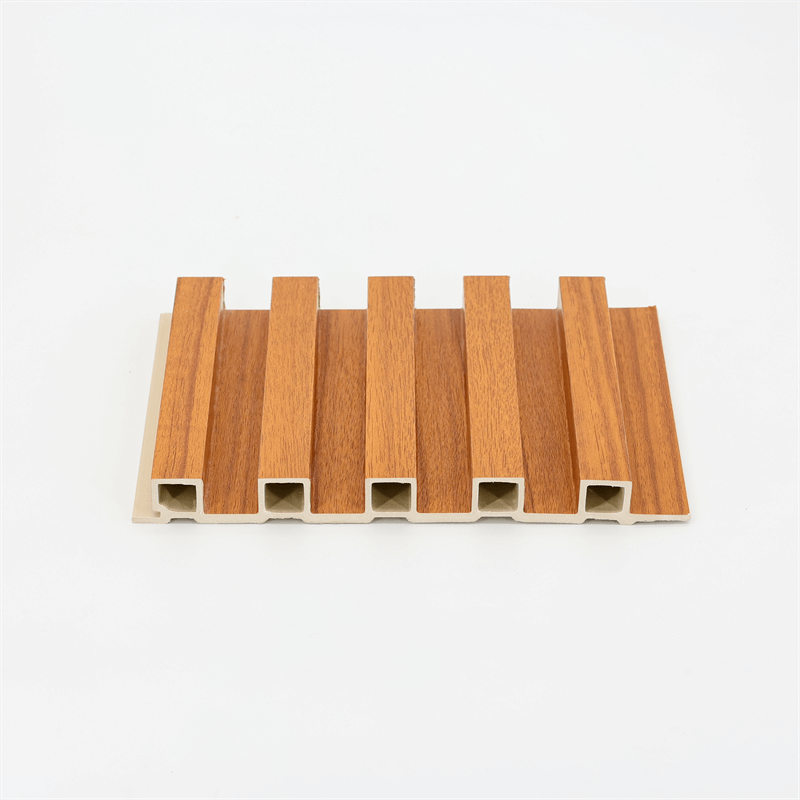In an era of increasing environmental awareness and rising energy costs, homeowners are seeking ways to make their homes more energy-efficient.
One often overlooked aspect of energy efficiency is the choice of building materials. Wood-Plastic Composite (WPC) wall panels not only offer aesthetic appeal and durability but also provide significant energy-saving benefits. In this essay, we will explore how WPC wall panels can enhance your home’s energy efficiency, focusing on their insulation properties, thermal performance, moisture control, and sustainable features. By choosing WPC panels, homeowners can reduce energy consumption, lower utility bills, and create a more comfortable living environment.
I. Insulation Properties
One of the key factors contributing to energy efficiency is proper insulation. WPC wall panels excel in this aspect, providing enhanced insulation for your home.
Consider the following advantages of their insulation properties:
- Thermal Insulation: WPC panels have excellent thermal insulation properties, helping to regulate indoor temperatures. They act as a barrier against heat transfer, preventing heat loss during colder months and heat gain during warmer months. This insulation reduces the reliance on heating and cooling systems, resulting in energy savings and lower utility bills.
- Noise Insulation: In addition to thermal insulation, WPC panels also offer noise insulation benefits. They can reduce the transmission of external noise, creating a quieter and more peaceful indoor environment. This insulation is particularly beneficial for homes located in noisy areas or near busy streets, enhancing comfort and well-being.
- Air Tightness: WPC panels contribute to the overall air tightness of your home. Their installation, when done properly, helps seal gaps and cracks, preventing air leakage. This air tightness minimizes drafts and air infiltration, reducing the load on heating and cooling systems and maintaining consistent indoor temperatures.
II. Thermal Performance
Apart from their insulation properties, WPC wall panels exhibit excellent thermal performance, further enhancing energy efficiency.
Consider the following aspects of their thermal performance:
- Low Thermal Conductivity: WPC panels have low thermal conductivity, meaning they are less prone to heat transfer. This characteristic helps maintain a comfortable indoor temperature by reducing heat loss or gain through the walls. As a result, homeowners can rely less on heating and cooling systems, leading to energy savings.
- Reduced Thermal Bridging: Thermal bridging occurs when there is a break in the insulation layer, allowing heat to escape or enter the building. WPC panels help minimize thermal bridging by providing a continuous insulation layer. This reduction in thermal bridging ensures that the insulation performance of the walls remains consistent, optimizing energy efficiency.
- Reflective Surfaces: Some WPC wall panels feature reflective surfaces that can help reflect solar radiation, reducing heat absorption. This feature is particularly beneficial in warmer climates, where excessive heat gain can strain cooling systems. By reflecting solar radiation, WPC panels contribute to a cooler indoor environment and reduce the need for mechanical cooling.
III. Moisture Control
Moisture control is crucial for maintaining a healthy and energy-efficient home. WPC wall panels offer effective moisture control measures, ensuring a dry and comfortable living environment.
Consider the following advantages of their moisture control properties:
- Moisture Resistance: WPC panels are highly resistant to moisture, preventing the absorption of water and the subsequent issues associated with moisture damage. Unlike traditional materials such as wood, WPC panels do not warp, rot, or promote mold growth when exposed to moisture. This moisture resistance helps maintain the structural integrity of the walls and avoids costly repairs.
- Vapor Permeability: While WPC panels repel liquid moisture, they also allow vapor permeability. This feature allows moisture trapped within the walls to escape, preventing the buildup of condensation and the potential for mold growth. By controlling moisture levels, WPC panels contribute to a healthier indoor environment and minimize the risk of respiratory issues.
- Enhanced Durability: Moisture-related damage can compromise the durability of building materials. By incorporating moisture-resistant properties, WPC panels offer enhanced durability and longevity. They withstand the challenges of moisture exposure, ensuring the long-term performance of the walls and reducing the need for frequent replacements.
IV. Sustainable Features
Energy efficiency goes hand in hand with sustainability. WPC wall panels embrace sustainable features that contribute to a greener home and a reduced environmental footprint.
Consider the following aspects of their sustainability:
- Use of Recycled Materials: WPC panels are primarily composed of recycled plastic materials, reducing the demand for virgin plastic and diverting plastic waste from landfills. By incorporating recycled materials, WPC panels contribute to the conservation of natural resources and promote a circular economy.
- Reduced Energy Consumption: The thermal insulation properties of WPC panels result in reduced energy consumption. By minimizing heat loss or gain through the walls, homeowners can rely less on heating and cooling systems, thereby lowering energy demand and reducing greenhouse gas emissions.
- Longevity and Durability: WPC panels offer exceptional durability and longevity, reducing the need for frequent replacements. Their resistance to moisture, pests, and environmental factors ensures that they can withstand the test of time. This durability minimizes waste generation and contributes to a more sustainable building industry.
- Recyclability: At the end of their life cycle, WPC panels can be recycled and used as raw materials for new products. This recyclability reduces waste and extends the lifespan of materials, creating a more sustainable approach to construction and design.

WPC wall panels provide an effective means to enhance your home’s energy efficiency.
With their insulation properties, thermal performance, moisture control, and sustainable features, these panels offer a holistic solution that reduces energy consumption, lowers utility bills, and creates a comfortable living environment.
By incorporating WPC panels into your home’s design, you can make a significant contribution to environmental preservation while enjoying the benefits of reduced energy costs and increased comfort.
Embrace the future of energy-efficient design with WPC wall panels and take a step towards a greener and more sustainable home.
In conclusion, WPC wall panels offer homeowners a practical and sustainable solution to enhance their home’s energy efficiency.
With their insulation properties, thermal performance, moisture control, and sustainable features, these panels contribute to a greener and more comfortable living environment.
By choosing WPC panels, homeowners can significantly reduce energy consumption, lower utility bills, and minimize their carbon footprint.
The insulation properties of WPC panels help regulate indoor temperatures, reducing the reliance on heating and cooling systems.
This, in turn, leads to energy savings and a more sustainable approach to energy usage.
Furthermore, WPC panels provide effective moisture control, preventing moisture-related issues such as mold growth and structural damage.
Their moisture resistance and vapor permeability ensure a dry and healthy indoor environment, promoting both energy efficiency and the well-being of occupants.
The sustainable features of WPC panels, including the use of recycled materials and their recyclability, contribute to a circular economy and the reduction of waste.
By opting for WPC panels, homeowners actively participate in environmental preservation and promote a more sustainable building industry.
Ultimately, WPC wall panels offer a practical and aesthetically pleasing solution to enhance energy efficiency in homes.
They not only provide the functional benefits of insulation, thermal performance, and moisture control but also offer a durable and sustainable alternative to traditional building materials.
As homeowners become increasingly conscious of their environmental impact and seek energy-efficient solutions, WPC wall panels emerge as a forward-thinking choice.
By embracing WPC panels, homeowners can create a more comfortable and sustainable living space while making a positive contribution to the planet.
Incorporate WPC wall panels into your home’s design and embark on a journey towards energy efficiency, sustainability, and a greener future.


